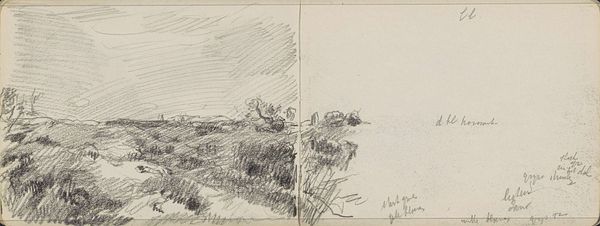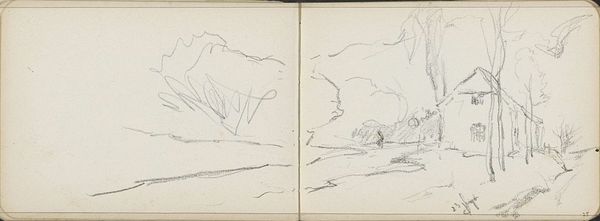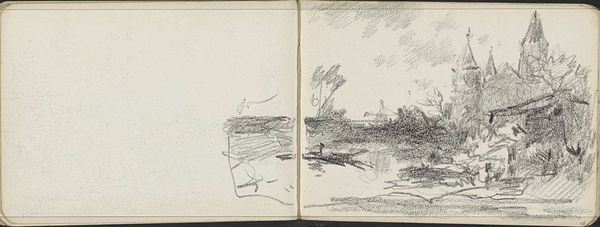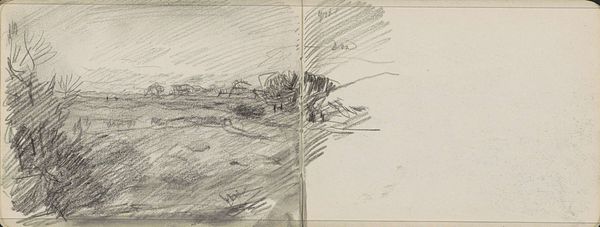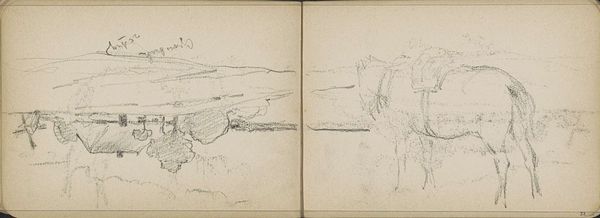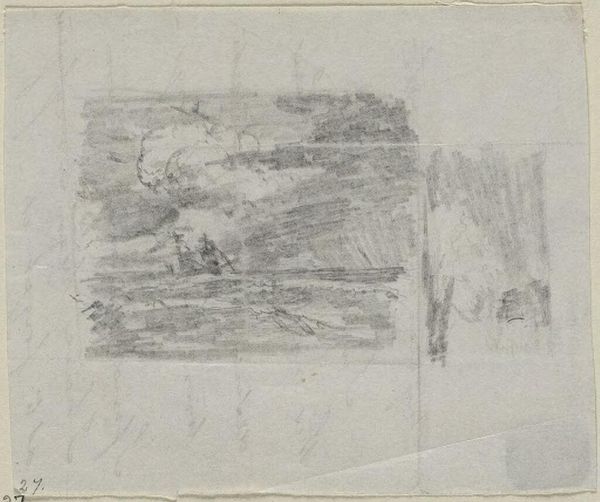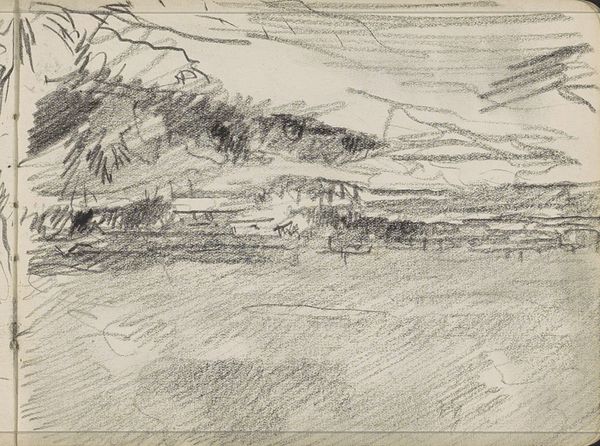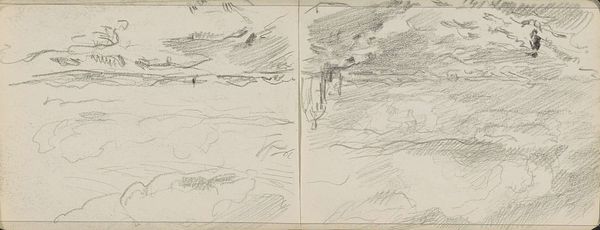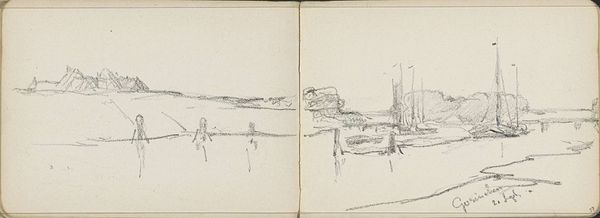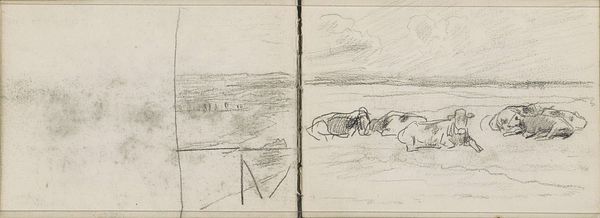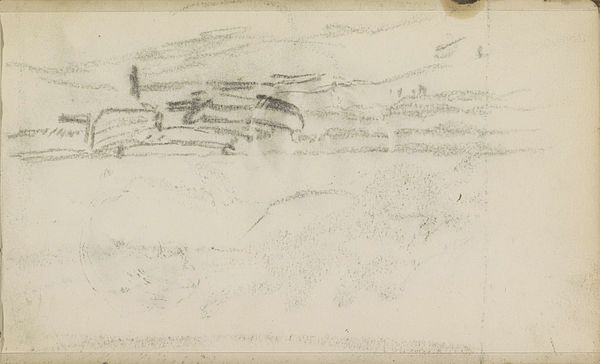
drawing, graphite
#
drawing
#
impressionism
#
landscape
#
graphite
#
realism
Copyright: Rijks Museum: Open Domain
Curator: Anton Mauve created this landscape drawing sometime between 1848 and 1888. It’s simply titled "Landschap met een figuur" which translates to "Landscape with a Figure." Editor: Well, it certainly conveys a mood of quiet contemplation. The graphite strokes are so light and fleeting, yet they capture a vastness of space. Curator: Exactly. Graphite on paper allowed Mauve a level of immediacy. Think of this as a readily available, portable means for recording the world around him, the quick strokes revealing the influence of impressionism with its focus on capturing fleeting moments. It's pure materiality. Editor: Indeed, Mauve clearly focuses on depicting the scene using very basic elements, creating depth and shadow with simple strokes. I’m immediately drawn to the interplay between the forms themselves. Curator: And where do you think he might have been when he put graphite to page? This period saw increasing urbanization that changed traditional land use—these were turbulent times, with many people being displaced and land commodified for industrial agriculture and expansion. The presence of the lone figure, somewhat ambiguous, invites one to consider the conditions in the Dutch countryside during the later 19th century. Editor: Perhaps. But to me, the sketch stands on its own merit as an essay of line and form. Notice how the artist uses diagonals to create movement, guiding the eye across the scene, lending an underlying sense of dynamic change that's so vital. Curator: What I find fascinating is that a relatively straightforward medium such as graphite enabled Mauve to engage in broader discourse—not only exploring aesthetics but responding to changing social conditions through a medium he encountered daily. Editor: I agree that his quick studies do touch on daily life, but looking beyond such circumstances, the artwork is an exquisite example of creating the illusion of volume and depth on a two-dimensional plane through line. The essence of form lies not just in the what, but the how, of representing space. Curator: I find myself now pondering anew about what defines landscape art—Mauve compels us to think more profoundly not about place, but production—his sketch evokes this history with deceptive simplicity. Editor: And for me, reflecting on line, light and composition opens up discussions far beyond time and space itself!
Comments
No comments
Be the first to comment and join the conversation on the ultimate creative platform.
